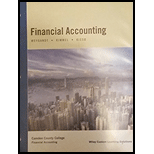
Concept explainers
a)
Financial Statements:
The statement prepared for the specific period which comprises the financial information of the organization. It includes a statement of income which shows the profitability of the business,
The financial statements include the following statements:
Income Statement:
It can be known as “
Classified Balance Sheet:
In case of the classified balance sheet, the assets are arranged in different classes in order to their liquidity and liabilities are arranged in order to their time of obligation. The classified balance sheet provides more useful information to the company as compared to the other form of the balance sheet.
Statement of
It is the statement which denotes the portion of income which is not paid to the stockholders in the form of a dividend. The amount of retained earnings is used by the corporation in future for expansion and development. Retained earnings are the account maintained under the category of capital account.
Cash flow statement:
It is the statement which involves the outflows or inflows of cash in the organization which could be because of the investing, financing, and operating activities carried on by the organization.
Closing Entry:
Closing entry is made at the end of the accounting period; in order to transfer the temporary balances of the income statement to the permanent accounts on balance sheet. The main objective of it is to make the balances of temporary account to zero.
Post-closing
The items that are presented in the financial statements are listed in the statement after posting the closing balances of ledgers in the trial balance. The statement is known as post-closing trial balance.
T-account:
It is the account or graphical representation of general ledger account or its entries. The left side of T-account is debit side and the right side represents as credit side. The
In order to journalize the transaction, the following are the rules which are to be followed:
Rules of debit and credit:
All the items mentioned in the income statement and balance sheet are presented by journalizing the accounts, then classifying them into ledgers and afterward resulted in the summarized income statement and balance sheet.
For journalizing the various accounts, rules of debit and credit has been followed according to the category of the account. There are five categories of accounts:
Assets: It can be defined as the resources which are controlled and owned by the organization and which are capable of providing some future benefits for operating the core business of the organization. Whenever any asset has been purchased or any transaction which increases the amount of asset, the asset account will be debited.
Liabilities: These are referred as Company’s financial obligation arising during the course of Business Cycle, which will be settled by the outflow of Resources. Whenever any transaction raises the amount of liability, the liability account will be credited.
Revenues: It is income that an entity earns from its normal business operations. It reflects the amount which is received by the firm by manufacturing or providing goods and services. Whenever income has been earned or due, the revenue account will be credited.
Expenses: These are the gross outflows incurred by a business entity while carrying out their regular business operations like manufacturing and providing goods and services. Whenever any expense has been due to be incurred, the expense account has been debited.
Capital account: This account represents the balance of amount invested by the stockholders. It also includes the earnings which are due and not withdrawn by the stockholders. Whenever any transaction increases the amount of capital, the capital account will be credited.
To prepare: The statement of income, the statement of retained earnings and the classified balance sheet of Company F for the year ended on December 31, 2015.
(b)
To journalize: The closing entries for Company F for the year ended on December 31, 2015.
(c)
To prepare: T-accounts and income statement to
(d)
To prepare: Post-closing trial balance of Company F for the year ended on December 31, 2015.
Want to see the full answer?
Check out a sample textbook solution
Chapter 4 Solutions
FINANCIAL ACCOUNTING W/WILEY+ >IP<
- Explain what we mean by consolidation (or consolidated financial statements)?arrow_forwardWhat is the Equity Method? How and when is this method applied to account for investment securities owned by a company?arrow_forwardIndigo Corporation purchased for $277,000 a 30% interest in Murphy, Inc. This investment enables Indigo to exert significant influence over Murphy. During the year, Murphy earned net income of $183,000 and paid dividends of $64,000. Prepare Indigo's journal entries related to this investment. (List all debit entries before credit entries. Credit account titles are automatically indented when amount is entered. Do not indent manually. If no entry is required, select "No Entry" for the account titles and enter O for the amounts.) Account Titles and Explanation (To record the purchase.) (To record the net income.) (To record the dividend.) Debit Creditarrow_forward
- Indigo Corporation purchased for $277,000 a 30% interest in Murphy, Inc. This investment enables Indigo to exert significant influence over Murphy. During the year, Murphy earned net income of $183,000 and paid dividends of $64,000. Prepare Indigo's journal entries related to this investment. (List all debit entries before credit entries. Credit account titles are automatically indented when amount is entered. Do not indent manually. If no entry is required, select "No Entry" for the account titles and enter O for the amounts.) Account Titles and Explanation (To record the purchase.) (To record the net income.) (To record the dividend.) Debit Creditarrow_forwardCheyenne Corporation purchased 400 shares of Sherman Inc. common stock for $12,900 (Cheyenne does not have significant influence). During the year, Sherman paid a cash dividend of $3.25 per share. At year-end, Sherman stock was selling for $37.00 per share. Prepare Cheyenne' journal entries to record (a) the purchase of the investment, (b) the dividends received, and (c) the fair value adjustment. (Assume a zero balance in the Fair Value Adjustment account.) (List all debit entries before credit entries. Credit account titles are automatically indented when amount is entered. Do not indent manually. If no entry is required, select "No Entry" for the account titles and enter O for the amounts.) No. Account Titles and Explanation (a) Debt Investments Cash (b) Cash Dividend Revenue (c) Fair Value Adjustment Unrealized Holding Gain or Loss - Income Debit Creditarrow_forwardCrane Corporation purchased 360 shares of Sherman Inc. common stock for $11,800 (Crane does not have significant influence). During the year, Sherman paid a cash dividend of $3.25 per share. At year-end, Sherman stock was selling for $34.50 per share. Prepare Crane' journal entries to record (a) the purchase of the investment, (b) the dividends received, and (c) the fair value adjustment. (Assume a zero balance in the Fair Value Adjustment account.) (List all debit entries before credit entries. Credit account titles are automatically indented when amount is entered. Do not indent manually. If no entry is required, select "No Entry" for the account titles and enter O for the amounts.) No. Account Titles and Explanation Debit Credit (a) (b) (c)arrow_forward
- Indigo Corporation purchased trading investment bonds for $65,000 at par. At December 31, Indigo received annual interest of $2,600, and the fair value of the bonds was $62,200. Prepare Indigo' journal entries for (a) the purchase of the investment, (b) the interest received, and (c) the fair value adjustment. (Assume a zero balance in the Fair Value Adjustment account.) (List all debit entries before credit entries. Credit account titles are automatically indented when amount is entered. Do not indent manually. If no entry is required, select "No Entry" for the account titles and enter O for the amounts.) No. Account Titles and Explanation Debit Credit (a) (b) (c)arrow_forwardSwifty Corporation purchased trading investment bonds for $40,000 at par. At December 31, Swifty received annual interest of $1,600, and the fair value of the bonds was $37,600. Prepare Swifty' journal entries for (a) the purchase of the investment, (b) the interest received, and (c) the fair value adjustment. (Assume a zero balance in the Fair Value Adjustment account.) (List all debit entries before credit entries. Credit account titles are automatically indented when amount is entered. Do not indent manually. If no entry is required, select "No Entry" for the account titles and enter O for the amounts.) No. Account Titles and Explanation Debit Credit (a) (b) (c)arrow_forwardabout investment securities owned by a company, what do we mean by “significant influence”?arrow_forward
- what is the working capital?arrow_forwardStatement of Financial position as at September 30 for 2023 and 2024 Assets 2023 2024 Cash and equivalents………………………………………. $56,100 $37,694 Receivables, Trade, less allowances of $1,104 and $991 respectively 47,753 37,645 Other Receivables…………………………………………………… 233 516 Inventories…………………………………………………………… 29,587 23,202 Prepaid expenses and other………………………………………….. 4,739 4,143 Total current assets…………………………………………………... 138,412 103,200 Property, plant and equipment, at cost………………………………. 314,880 298,609 Less accumulated depreciation………………………………………. (225,406) (211,494) Property, plant and equipment net…………………………………… 89,474 87,115 Other assets Goodwill……………………………………………………………...…arrow_forwardSwifty Corporation had 2025 net income of $1,169,000. During 2025, Swifty paid a dividend of $2 per share on 87,850 shares of preferred stock. During 2025, Swifty had outstanding 301,000 shares of common stock. Compute Swifty's 2025 earnings per share. (Round answer to 2 decimal places, e.g. 3.56.) Earnings per share GA $ per sharearrow_forward
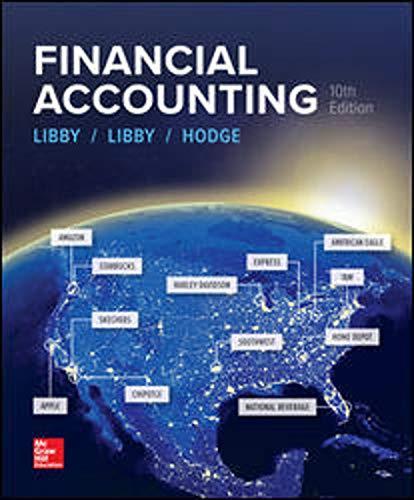
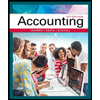 AccountingAccountingISBN:9781337272094Author:WARREN, Carl S., Reeve, James M., Duchac, Jonathan E.Publisher:Cengage Learning,
AccountingAccountingISBN:9781337272094Author:WARREN, Carl S., Reeve, James M., Duchac, Jonathan E.Publisher:Cengage Learning,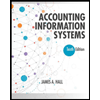 Accounting Information SystemsAccountingISBN:9781337619202Author:Hall, James A.Publisher:Cengage Learning,
Accounting Information SystemsAccountingISBN:9781337619202Author:Hall, James A.Publisher:Cengage Learning,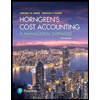 Horngren's Cost Accounting: A Managerial Emphasis...AccountingISBN:9780134475585Author:Srikant M. Datar, Madhav V. RajanPublisher:PEARSON
Horngren's Cost Accounting: A Managerial Emphasis...AccountingISBN:9780134475585Author:Srikant M. Datar, Madhav V. RajanPublisher:PEARSON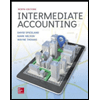 Intermediate AccountingAccountingISBN:9781259722660Author:J. David Spiceland, Mark W. Nelson, Wayne M ThomasPublisher:McGraw-Hill Education
Intermediate AccountingAccountingISBN:9781259722660Author:J. David Spiceland, Mark W. Nelson, Wayne M ThomasPublisher:McGraw-Hill Education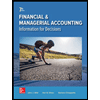 Financial and Managerial AccountingAccountingISBN:9781259726705Author:John J Wild, Ken W. Shaw, Barbara Chiappetta Fundamental Accounting PrinciplesPublisher:McGraw-Hill Education
Financial and Managerial AccountingAccountingISBN:9781259726705Author:John J Wild, Ken W. Shaw, Barbara Chiappetta Fundamental Accounting PrinciplesPublisher:McGraw-Hill Education





